论文标题:The appropriation of autopoiesis in architecture
期刊:Frontiers of Architectural Research
作者:Guillermo Sánchez Sotés, Thomas Fischer, Christiane M. Herr
发表时间:August 2025
DOI: https://doi.org/10.1016/j.foar.2024.12.005
微信链接:点击此处阅读微信文章
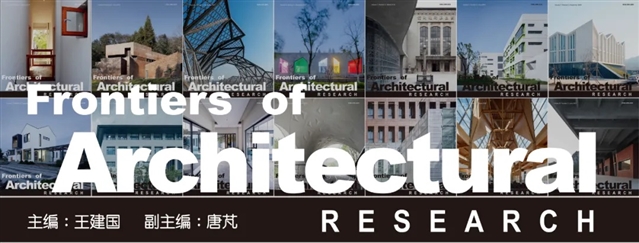
FoAR是由高等教育出版社和东南大学建筑学院联合主办的全英文学术期刊
建筑学 / 城乡规划 / 风景园林
本刊已被 A&HCI / EI / CSCD / Scopus / DOAJ / CSTPCD 收录
中国科技期刊卓越行动计划 英文领军期刊
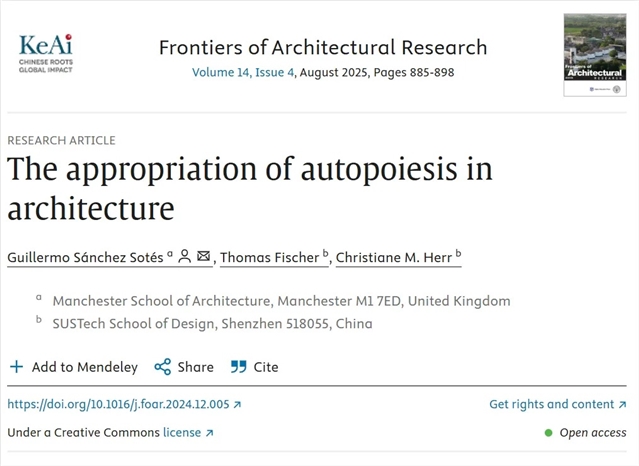
01 论 文 题 目
Manuscript Title
The appropriation of autopoiesis in architecture
建筑学中的“自创生”理论
02 作 者
Authors
Guillermo Sánchez Sotés(a)* , Thomas Fischer (b), Christiane M. Herr (b)
(a) Manchester School of Architecture, Manchester M1 7ED, United Kingdom
(b) SUSTech School of Design, Shenzhen 518055, China
03 论 文 摘 要
Abstract
This study investigates the merits of the cross-disciplinary appropriation of the theory of autopoiesis in Patrik Schumacher’s The Autopoiesis of Architecture. In this two-volume work, Schumacher builds upon Luhmann’s sociological adoption of Maturana et al.’s biological theory of autopoiesis. This lineage of repeated appropriation raises questions about the merits of the cross-disciplinary appropriations of natural-scientific theory in architecture in general and the appropriation of autopoiesis in architectural theory in particular. Specifically, what are the merits of Schumacher’s appropriation of the theory of autopoiesis? In this article, we develop and apply a text analysis method drawing on discourse analysis, close reading, visual interpretation, and “inference to the best explanation” to analyse a set of three pertinent samples from The Autopoiesis of Architecture. Our analysis, using previously established categorisations of language use and merits of theory appropriation, shows that Schumacher employs various modes of language use in The Autopoiesis of Architecture to reference both prior instances of autopoiesis. These ambiguities serve to achieve merits that, in many cases, seem to benefit the author rather than his readers.
本研究旨在探讨帕特里克?舒马赫(Patrik Schumacher)在《建筑的自创生》(The Autopoiesis of Architecture)中对 “自创生理论” 进行跨学科挪用的价值。在这部两卷本著作中,舒马赫以卢曼(Luhmann)从社会学角度对马图拉纳(Maturana)等人提出的生物学 “自创生理论” 的挪用为基础。这种反复挪用的理论脉络引发了一系列问题:总体而言,自然科学理论在建筑学中的跨学科挪用有何价值?具体到建筑理论中,“自创生理论” 的挪用又有何意义?其中核心问题是:舒马赫对 “自创生理论” 的挪用究竟有何价值?本文构建并应用了一种文本分析方法,该方法融合了话语分析、细读、视觉解读及 “最佳解释推理”,对《建筑的自创生》中三个相关样本进行分析。基于已有的语言使用分类框架和理论挪用价值评价标准,分析结果显示:舒马赫在《建筑的自创生》中运用了多种语言表达形式,以同时指代 “自创生理论” 先前的多个版本。然而,这些表述中的模糊性所达成的 “价值”,在多数情况下似乎更利于作者自身,而非读者。
04 关 键 词
Keywords
Autopoiesis / 自创生
Architectural theory / 建筑理论
Theory appropriation / 理论挪用
Metaphor / 隐喻
05 章 节 标 题
Sections Title
1. Introduction / 引言
2. Cross-disciplinary appropriations of autopoiesis/ 自创生理论的跨学科挪用
3. Text analysis method / 文本分析方法
3.1. Selection of passages for analysis/ 分析文本的选取
3.2. Procedures and categories/ 分析步骤与分类标准
3.3. Unified framework/ 统一分析框架
4. Analysis of the appropriation of autopoiesis / 自创生理论的挪用分析
4.1. Thesis 2—The unity of architecture/ 论点 2—— 建筑的统一性
4.2. Thesis 4—The necessity of theory/ 论点 4—— 理论的必要性
4.3. Thesis 39—The problem definition and problem structure/ 论点 39—— 问题的界定与结构
5. Observations and reflections/ 观察与反思
6. Implications and contributions / 启示与贡献
06 主 要 插 图
Illustrations

▲ 图一:自生产多粒子细胞结构的四个连续时间步长(根据 Varela 等人 1974 年的研究重绘)。
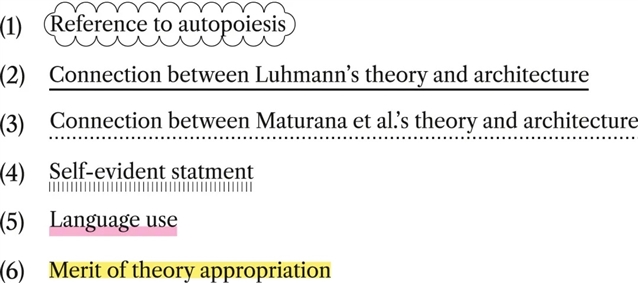
▲ 图二:本研究中的编码分类。颜色和线型设计旨在提高可读性,即使在分类重叠时也能清晰区分。©本文作者
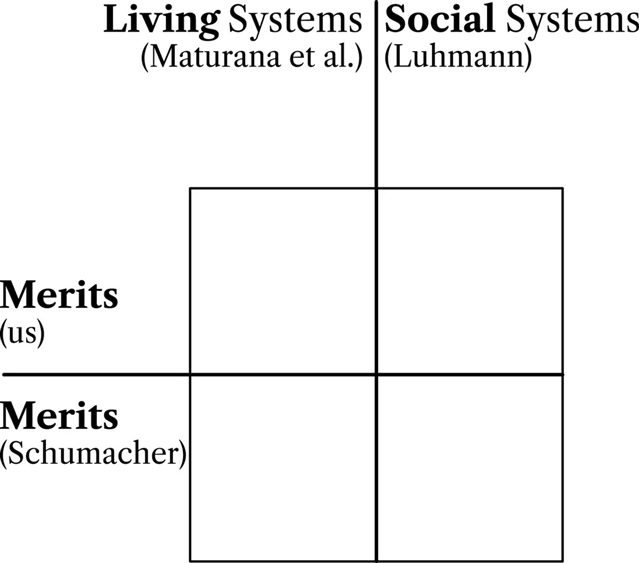
▲ 图三:二维矩阵:基于所引用的先行理论和理论挪用的受益对象对样本进行分类。©本文作者
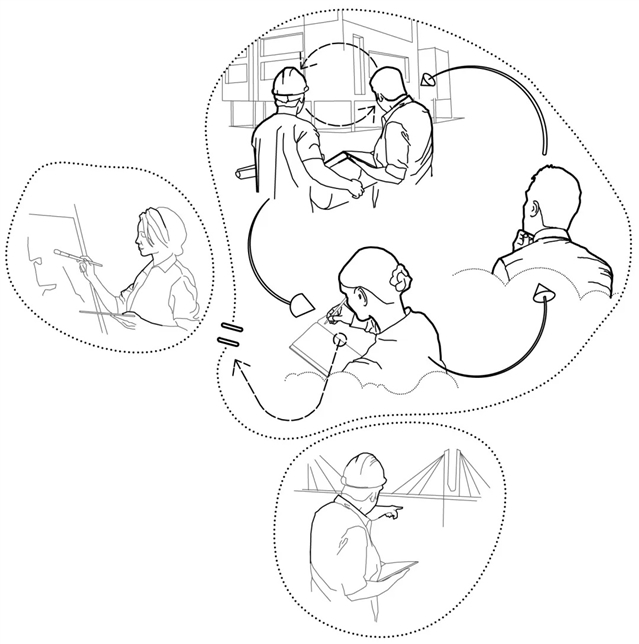
▲ 图四:对论点 2 的可视化解读:通过边界管理呈现建筑学科的统一性。©本文作者
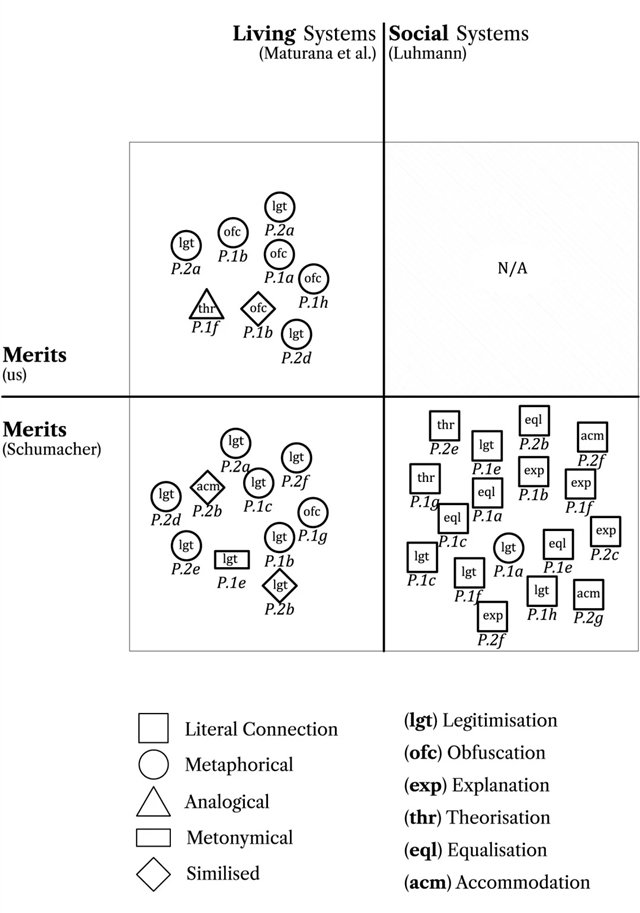
▲ 图五:所有样本中自创生理论引用的叠加图:在单一二维矩阵中呈现语言使用、理论挪用价值及受益对象的整体模式。©本文作者
07 作 者 介 绍
Authors’ Information

Guillermo Sánchez Sotés
Lecturer
Manchester School of Architecture
Manchester, United Kingdom
Guillermo Sánchez Sotés is a Madrid-based chartered architect and Lecturer at the Manchester School of Architecture. He holds a Ph.D. from the University of Liverpool (based at Xi’an Jiaotong-Liverpool University, China), in which Guillermo investigates the merits of cross-disciplinary appropriations of natural scientific theory in architecture. He has obtained multiple scholarships and granted funds that enabled him to enrol in both research and teaching at different universities while also collaborating with various international architectural firms such as Izaskun Chinchilla Architects. Guillermo is also the co-founding partner of Chubby Lab design studio, practising at the intersection of culture, technology and research across multiple disciplines.

Thomas Fischer
Professor
SUSTech School of Design
Shenzhen, China
Professor of the School of Design at Southern University of Science and Technology, is a design educator and researcher with extensive international experience. He has taught Interactive Systems Design and Industrial and Product Design at The Hong Kong Polytechnic University for over ten years, as well as Architecture and Industrial Design at Xi’an Jiaotong-Liverpool University for ten years. He was a visiting academic at National Cheng Kung University and at Humboldt University. He holds a Ph.D. in Education from the University of Kassel, a Ph.D. in Architecture and Design from RMIT University, and a Graduate Certificate in Cybersecurity from Harvard University. Professor Fischer has more than 100 peer-reviewed academic publications. He is a Fellow of the Design Research Society, a Fellow of the Cybernetics Society, a Certified Talent of the International Academy for Systems and Cybernetic Sciences, and a recipient of the American Society for Cybernetics’ Warren McCulloch Award. His academic research is focused on design computing, design cybernetics, design geometry, and digital media. He is the Chief Design Officer of the technology company anabrid.

Christiane M. Herr
Professor
SUSTech School of Design
Shenzhen, China
Christiane M. Herr is Professor and PhD supervisor as well as responsible person for education and Director of the BEng Industrial Design program at the School of Design, Southern University of Science and Technology. With a background in architecture and engineering, Christiane leads the Future Ecologies Research Group with a focus on the areas of cross-disciplinary ecological design, advanced façade technologies and digitally supported design. Christiane obtained a Dipl.-Ing. degree from the University of Kassel, an MArch and Ph.D. degrees from The University of Hong Kong and a second Dr.-Ing. degree from the University of Kassel. Before joining SUSTech, she held positions as Associate Professor at Xi’an Jiaotong-Liverpool University and Shenzhen University and as Visiting Assistant Professor at National Cheng Kung University. Christiane was President of the Association for Computer-Aided Architectural Design Research in Asia (CAADRIA) for four years and is currently vice-chair of the Board of the CAADFutures Foundation. She is a member of the editorial boards of the Journal of Architectural Computing (IJAC), the journal Architectural Intelligence and the journal Sustainable Horizons. Herr has authored over 100 peer reviewed academic publications and has recently co-edited the book “Design Cybernetics: Navigating the New”, published in the Springer Design Research Foundations Series.
08 原 文 阅 读
Download Link

长按上方二维码|浏览本期精彩论文
《前沿》系列英文学术期刊
由教育部主管、高等教育出版社主办的《前沿》(Frontiers)系列英文学术期刊,于2006年正式创刊,以网络版和印刷版向全球发行。系列期刊包括基础科学、生命科学、工程技术和人文社会科学四个主题,是我国覆盖学科最广泛的英文学术期刊群,其中12种被SCI收录,其他也被A&HCI、Ei、MEDLINE或相应学科国际权威检索系统收录,具有一定的国际学术影响力。系列期刊采用在线优先出版方式,保证文章以最快速度发表。
中国学术前沿期刊网
http://journal.hep.com.cn

特别声明:本文转载仅仅是出于传播信息的需要,并不意味着代表本网站观点或证实其内容的真实性;如其他媒体、网站或个人从本网站转载使用,须保留本网站注明的“来源”,并自负版权等法律责任;作者如果不希望被转载或者联系转载稿费等事宜,请与我们接洽。